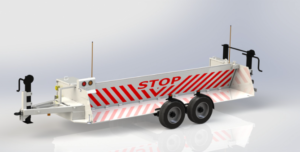Eight out of every ten people will experience neck or back pain at some point in their lives. Acute pain is sudden, extreme pain that goes away after a few days or weeks. However, some patients appear to experience discomfort despite nonsurgical or surgical treatment options. Prolonged discomfort often results in chronic pain. This pain has the potential to impair normal functioning and quality of life. Here are six pointers to aid your recovery:
1. Ice and heat therapy.
Where possible, apply a cold compress. This could be anything cold, such as a packet of ice wrapped in a blanket, then heat. “Ice then heat” is the rule. This is alternated after 48 hours. This type of therapy will solve any discomfort caused in your neck and back muscles or ligaments. The ice combats the swelling and irritation while also offers some pain relief. After that, adding heat improves blood circulation to the deep tissues and eases muscle spasms.
2. Massage therapy.
Massage therapy is a standard treatment for muscle strain, inflammation, discomfort, aches, and stiffness. Massage therapy provides immediate pain relief. Applying gentle pressure to your neck or back for a minute will provide adequate pain relief. Besides, massage treatment regularly increases muscle flexibility. A massage therapy regimen will relieve the discomfort and increase joint agility, lowering the risk of tearing a muscle and risking further damage. Massage accomplishes this by reducing lactic acid accumulation in the muscles. Lactic acid is a byproduct of muscle metabolism that, if unregulated, causes muscle cramping and stiffness. Back and neck pain are exacerbated as a result of this. If you have a supportive companion, subtle massage can offer relief by relaxing tight muscles and connective tissues.
3. Over-the-counter treatment.
Inflammation is the body’s defensive reaction to discomfort or injury, manifested as redness, swelling, and pain. If your stomach tolerates non – steroidal anti-inflammatory drugs like ibuprofen are recommended. Since this medication is only meant for short-term use, never use it for longer than a week unless your healthcare specialist recommends it.
4. Stretching.
Stretching the muscles, connective tissues, and ligaments that reinforce the spine routinely is an essential component of all neck and back exercises. Stretches for neck and back pain are most often recommended by a psychotherapist or spine expert. Stretching reduces stress in the muscles that support the spinal column. Tension in these muscles may intensify discomfort from a variety of back pain problems. Besides, stretching further increases the range of flexibility and more excellent stability, lowering the risk of disability induced by neck and back pain. Stretches may be recommended as part of a physiotherapy regimen for chronic neck and back pain at Desert Spine and Scoliosis Center.
5. Improve your posture.
Neck or back pain can often be ascribed to poor posture and weakened spinal muscles. People in the twenty-first century live more inactive lives than previous generations. This sedentary lifestyle will weaken your spinal muscles and significantly decrease your overall aerobic fitness. By adjusting your posture, you can considerably lower your risk for neck and lower back pain.
Standing posture.
Imagine a line running from your ear to your shoulder to your hip to your ankle. This hypothetical line would perfectly fit with these joints if you have a perfect posture. Correct standing posture also entails keeping your head up, facing forward with your shoulders back, and your chest out.
Sitting posture.
Sit as far back in the chair as possible to retain a straight back with a standard low back curve and position your glutes at the end of the chair. When seated, proper posture is obtained by looking forward, keeping your shoulders are drawn back, and your spine up against the chair.
6. Consult a specialist.
Are you wondering what type of doctor treats neck or back pain? There may be more than one, based on the nature of the patient’s condition. The first step in addressing the neck or back pain is determining the source of the discomfort. This will be accomplished by having a qualified orthopedic spine surgeon evaluate you. Once your spine surgeon has reviewed your condition, he will prescribe the correct treatment course to relieve your neck or back pain.
A sore neck with mild discomfort will usually be managed at home. If the pain does not reduce in a few days or you experience more symptoms, you should seek specialist recommendations.


